It’s been a while since I did a medieval bread post (*cough*five years*cough*) so I thought it was time to bring it up again. I wanted this to be a post and recipe for everyone to be able to make medieval style bread.
I’ve been making sourdough a lot the last few months (thank you Lady Audrey) which has given me a better appreciation for the art and act of levening. This made me want to return to my old bread recipe. So for the first one were starting from my reassessment of medieval bread. Searching more info I found Steamy Kitchen which seems a super similar one.
My recipe is:
- 4 cups flour
- 1 1/3 +1/4 cups water
- 1 tsp salt
- 2 tsp yeast
and theirs is:
- 4 cups flour
- 1 1/2 cups water
- 2 tsp salt
- 2 tsp quick rise yeast
The big difference is that I use traditional yeast vs. their quick rise yeast. I haven’t used quick rise yeast but from what I can tell the big differences are that you don’t need to get quick rise yeast started in water (not an issue as my recipe requires mixing the yeast and water to mimic the barm) and that you can cut about 15 minutes off the rising time for quick rise yeast. Oh, also I don’t have a stand mixer. But that’s fine I like the feeling of kneading bread.
So I’ll take their advice into account. Especially the development of gluten as it’s a fairly low hydration bread so I want to get the yeast well spread and active.
Here’s the key advice I’m taking from them:
Knead, knead, and knead some more. Then let it rest for five minutes and go back to kneading. It should be smooth and soft.
Form your dough well, with good surface tension. Click through to Steamy Kitchen, they have some great photos of what it’s going to look like.
I’m using my pampered chef covered baker. I normally use my pampered chef pizza stone or large stoneware pie plate but the covered baker should let me get it closer to a medieval oven (squad goals). If you don’t have any covered stoneware just bake it on a baking stone or in what stoneware you have without the cover, or you can try a flower pot. I’ll also be adding some water for steam to slow the crust development (which I normally do for medieval bread but I don’t think I ever actually mention that).
So lets’s go to The Good Huswife’s Handmaide for the Kitchen (1588):
Fine Manchet. “Take halfe a bushell of fine flower twise boulted, and a gallon of faire luke warm water, almost a handful of white salt, and almost a pinte of yest, then temper all these together, without any more liquor, as hard as ye can handle it: then let it lie halfe an hower, then take it up, and make your Manchetts, and let them stande almost an hower in the oven. Memorandum, that of every bushell of meale may be made five and twentie caste of bread, and every loafe to way a pounde besyde the chesill.
The whitest flour, warm water, a barm/yeast, salt. You can see my previous post on this bread for how I made the scaled down version that I use. For the flour there’s no need to do a mix as they’re using the whitest flour they could (still not as white as ours) but if you want then it’s 3 1/2 cups white (unbleached) 1/2 cup whole wheat.
- 4 cups flour
- 1 1/3 +1/4 cups warm water
- 1 tsp salt
- 2 tsp yeast
- Stir yeast into 1/4 cup warm water, add a little sprinkling of flour.
- Let sit 30 minutes
- Blend yeast mixture with remaining warm water
- Slowly blend in flour and salt
- Knead till your arms fall off (just kidding, but about 10-20 minutes)
- Let rest for 10 minutes
- Knead till smooth and soft, form ball
- Cover and let stand 1/2 hour (I use a very light wet tea towel)
- Preheat oven to 450 with stoneware in (note this is not recommended by the manufacturer. For this go I preheated to 375, added the stoneware and finished preheating)
- Form two loaves (use the surface tension method from Steam Kitchen)
- Place loaves in the stoneware, add 1/4 cup water, and close it (if there’s a lid)
- Bake for 20 minutes, remove lid, bake 30 minutes or till done
- Each loaf should weigh 1lb
- Leave the bread to cool for about an hour before eating (if you can)
For this run I made only one loaf, it weighed in at two pounds so I recommend making two loaves with this recipe. I’ll try that next time.
- Yeast, warm water, and flour
- Ready to rise
- Bread after first half of baking
- I decided to check the internal temperature this time to determine doneness
- Such a beautiful loaf
- Ready to cut into it
- It’s a bit heavier than expected, likely because of the short rise but we still went through it in less than a day
I’ve increased the time for the yeast to activate from 10 minutes to 30. That should give the bread more rising power early and make up for the short rise this recipe calls for. Your other option is to give longer than the period recipe’s 30 minutes for the rising, or to do a second rise.
If you’re planning on eating the bread in multiple days brush the crust with melted butter while it’s cooling to keep it soft.
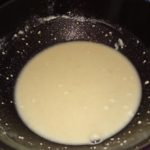
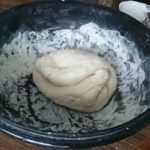
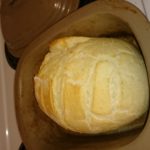
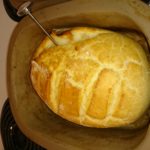
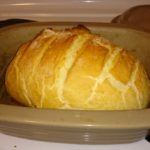
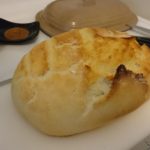
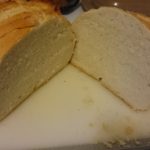
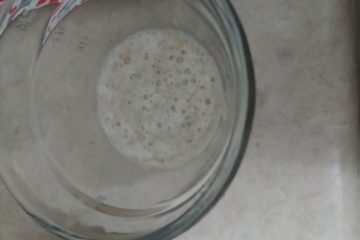
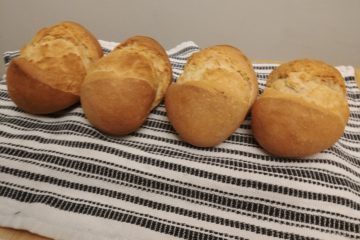
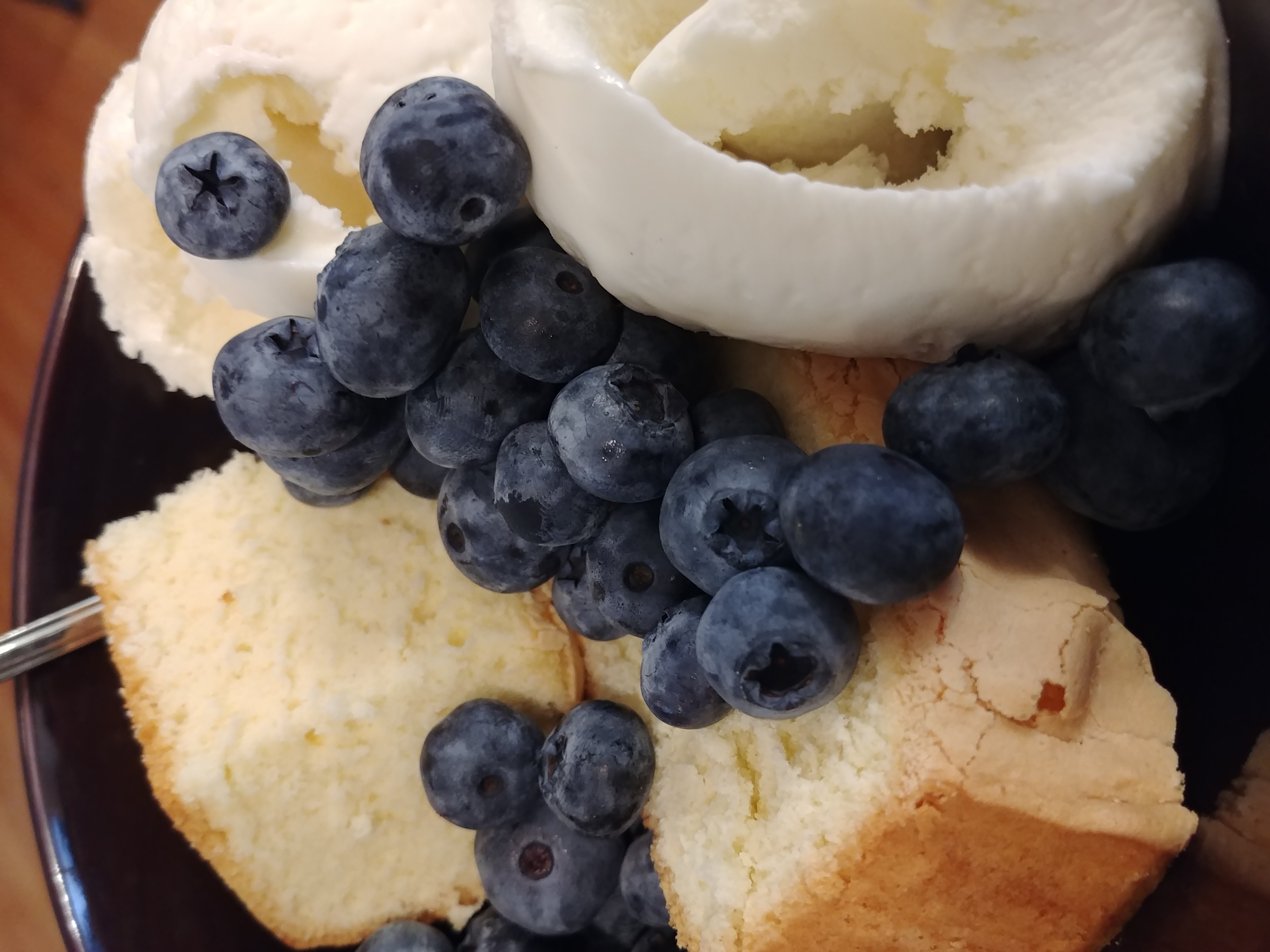
1 Comment
Beer Barm Bread – A Baker's Peel Vert · January 17, 2019 at 4:31 pm
[…] In fact I made some out of mead barm too. And I’ve come up with a number of ways of making a medieval loaf. Today I put my money where my mouth is. I’ve got some barm from a local brewer and I’m […]
Comments are closed.